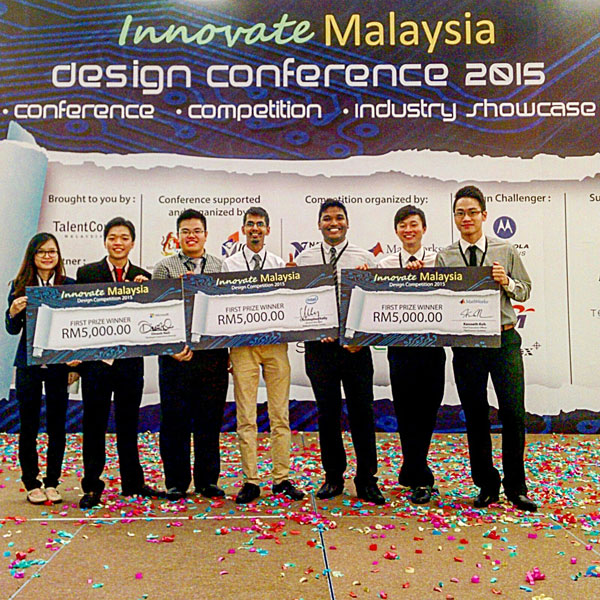KUCHING – An automated sensor that detects heavy metal pollution, a vehicular self-navigating system and a solar hybrid powered computer unit were first place winners in the Innovate Malaysia Design Competition in Kuala Lumpur, recently.
The Swinburne University of Technology Sarawak Campus student-designed projects won the three tracks they competed in, namely in the Microsoft, Intel and MathWorks tracks.
There were a total of seven tracks, or categories, in the engineering design competition.
Electrical and electronic students Kong Kah Hung and Ling Ting Yang were the brains behind the heavy metal detecting invention. The two had developed and published a Windows phone app, which when paired with a sensor, helps researchers to detect and quantify lead in water. Lead poisoning can cause serious health problems.
“The app serves as a data logger and automatically makes the calculation to determine how much lead is present in real time,” said team advisor Dr Chua Hong Siang, the electrical and electronic course coordinator of the university’s engineering faculty.
The autonomous vehicular navigating system was designed by robotics and mechatronics students Foong Chee Hin and Daniel Sim Yeat Han. The MathWorks winner works by tracking the car in front of it.
“This was achieved with the visual information acquired by a camera. Data on the position and distance of the lead vehicle is obtained from a marker attached to the back of the lead vehicle. From this, the trailing vehicle navigates and makes adjustments to stay on the desired distance in relation to the lead vehicle,” said Dr Hudyjaya Siswoyo Jo, the team’s mentor.
Mathematical computing software developer MathWorks, which sponsored the track, provided training and software package for shortlisted candidates as part of the competition.
The Intel track winners, Martin Wong, Ashwinsekar Chandrasekaran and Ajmal Ghanty, designed and developed a computing unit which ran on solar hybrid power technology. Using Intel Galileo and Minnowboard, it is powered by a solar-panel and on-board batteries. It could run a full-fledge Windows 8.1 system.
“As long as the sun shines, the solar panel will charge the unit. This is especially practical, for example, for nurses and doctors in rural clinics, emergency centres, and in remote areas or places where power outlets may be lacking,” said Dr Almon Chai, the coordinator for the robotics and mechatronics course at Swinburne Sarawak who advised the students.
The multi-discipline engineering design competition is open to all final year undergraduate engineering or computer science students in Malaysia. The goal is to promote an innovation culture and mindset among university graduates, enhance knowledge and skill set in practical engineering, encourage greater interest in engineering design and collaboration between industry universities.


